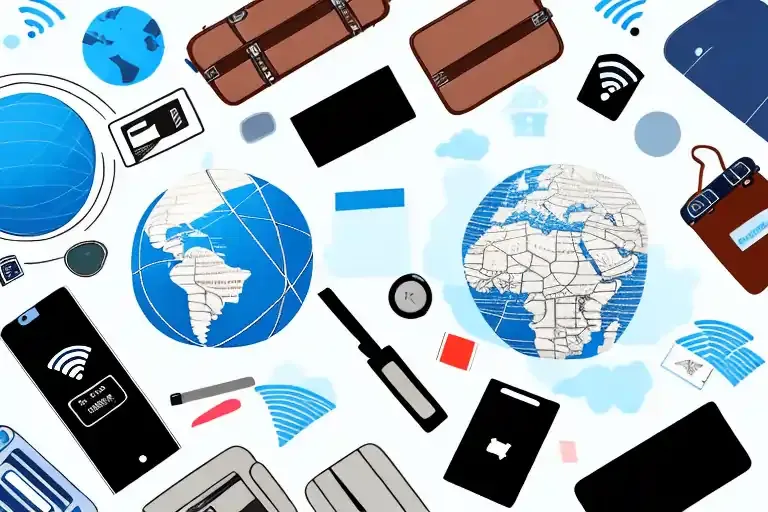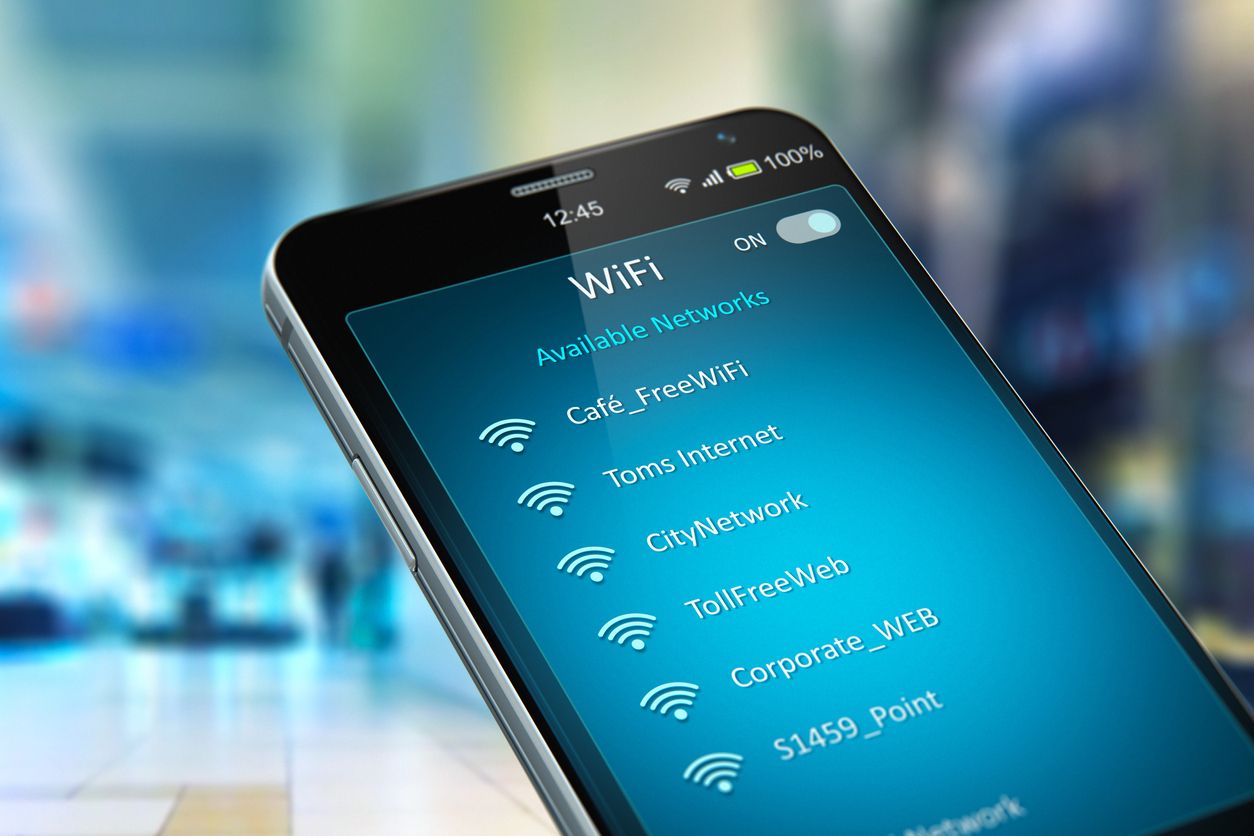eSIM
eSIM vs Physical SIM: Complete Comparison Guide 2025
Discover which SIM type suits your lifestyle—compare convenience, cost, and compatibility for travel, security, and device flexibility.
In 2025, eSIMs have surpassed physical SIMs in convenience, travel flexibility, and security—especially if you own a newer device. However, physical SIMs still offer universal compatibility and simplicity. This guide breaks down how they compare across use scenarios—travel, business, sustainability—to help you choose the right SIM for your needs.

Quick Comparison: eSIM vs Physical SIM at a Glance
Before diving into detailed analysis, here's how eSIMs and physical SIMs compare across the most important factors:
This comparison reveals that eSIMs excel in convenience, security, and travel scenarios, while physical SIMs maintain advantages in compatibility and simplicity. The right choice depends on weighing these factors against your specific needs and priorities.
What Are eSIMs and Physical SIMs?
Understanding how each technology works helps clarify their practical differences and why certain advantages exist.
Understanding Physical SIM Cards
A physical SIM card stores essential account data and lets your phone connect to cellular networks. These plastic cards contain two critical identifiers: the IMSI (International Mobile Subscriber Identity), which uniquely identifies you to your carrier, and the ICCID (Integrated Circuit Card Identifier), which identifies the specific SIM card. While universally compatible—even with older devices—they can be lost, damaged, or swapped easily.
Understanding eSIM Technology
An eSIM, or embedded SIM, is a digital alternative to a traditional SIM card that’s built directly into your device. Rather than inserting a plastic SIM card, you activate an eSIM remotely by scanning a QR code or entering details via your carrier’s app or website.
This makes switching plans or adding a new number much faster—especially useful when traveling or managing multiple lines. Since the eSIM is integrated into your device, it also reduces the risk of losing or damaging your SIM.
To find out if your device supports eSIM and how to get started, visit our eSIM compatibility checker and installation guide for setting up eSIMs.
Detailed Feature Comparison Between eSIM and Physical SIM
Installation and Setup Process
- Physical SIM: Insert and wait a few minutes.
- eSIM: Scan QR or enter details—ideal for activating travel plans before departure.
Device Compatibility and Support
- Physical SIM: Works in any SIM-supported device.
- eSIM: Supported on iPhone XS onward, Galaxy S20+, Pixels, iPads, travel routers. Check Nomad compatibility list.
Network Performance and Coverage
Identical performance domestically. Internationally, eSIM travel providers (like Nomad) often switch networks for best signal, offering better roaming performance.
Security and Privacy Comparison
eSIMs can’t be physically stolen or cloned and offer improved remote authentication. Physical SIMs are more prone to theft or SIM swap attacks. Check our guide on SIM swap protection.
Cost Analysis: eSIM vs Physical SIM
Understanding the financial implications helps determine which technology offers better value for your specific usage patterns.
Costs
- Roaming: $5–15/day or $10–20/MB.
- Local physical SIM: $10–50 per country + SIM card fees.
- Travel eSIM (e.g., Nomad): 1–10GB regional plans for $15–50, with global options available. Often significantly cheaper and easier, especially for multi-country trips.
When to Choose Between Physical SIM and eSIM
- eSIM: frequent travelers, multi-line users, tech-savvy individuals, eco-conscious users.
- Physical SIM: older devices, infrequent travelers, those who switch phones often, or want a quick emergency backup.
- Hybrid Approach: use a physical SIM for voice and keep an eSIM for data/travel. This offers both coverage and flexibility without removing your primary number. Learn more about hybrid setups and dual-SIM strategies in our dual-SIM guide.
Setup and Troubleshooting Guide
- Physical SIM Setup: Insert SIM tray > device auto-activates
- eSIM Setup: Scan QR > Settings > Cellular > Add Cellular Plan
Check out our detailed eSIM installation guides for Android and installation guide for iPhone for in-depth instructions.
No service? Try toggling airplane mode, restarting, or resetting network settings. If unresolved, consult our eSIM troubleshooting guide or our piece on how to delete an eSIM. If you are using a Nomad eSIM, you can also contact our support team who are available 24/7.
Nomad's eSIM Solution: The Traveler's Choice
Once you’ve understood how to set up and manage both SIM types, choosing the right provider becomes just as important—especially when you’re traveling. That’s where Nomad offers a distinct advantage.
Designed with international travelers in mind, Nomad’s eSIM service provides seamless mobile data in over 200 countries, with regional plans that allow you to move across borders without switching SIMs. Activation is remote and fast—you can scan a QR code and be connected before your plane even takes off.
Nomad also helps simplify ongoing management with a user-friendly app for monitoring data usage, setting alerts, and topping up when needed. With transparent pricing starting from $1.10/GB, and no long-term contracts or hidden fees, it’s a flexible solution for short-term trips, work travel, or extended stays abroad.
If you want reliable connectivity without the hassle of SIM swaps or the risk of roaming charges, an eSIM from Nomad is a smart option to consider.
Highly rated 4.4/5.0 on Trustpilot
Save up to 50% on roaming
Fast and reliable network
Frequently Asked Questions (FAQs)
Can I use both eSIM and physical SIM simultaneously?
Yes, most modern smartphones support dual SIM functionality, allowing you to use an eSIM and physical SIM at the same time. You can designate one line for calls and another for data, or use them for different purposes like personal and business communications. This setup is particularly useful for travelers who want to maintain their home number while using a local eSIM for data. Learn more in our dual-SIM guide.
Do eSIMs affect battery life?
eSIMs have no measurable impact on battery life compared to physical SIMs. Any battery life differences you notice are more likely related to network coverage quality, usage patterns, or other device settings rather than SIM type.
Are eSIMs more secure than physical SIMs?
Yes, they are harder to steal or swap and support stronger activation safeguards.
Can I transfer my eSIM to a new phone?
Yes, eSIM transfer processes vary by carrier, but most support moving your eSIM profile to a new device. Always check with your carrier about their specific transfer procedures before switching devices.
Which is cheaper for international travel?
eSIMs are typically significantly cheaper for international travel. Traditional roaming charges can cost $5−15per day, while travel eSIM plans often provide multiple gigabytes for $20−50permonth. The savings increase dramatically for longer trips or multiple destinations.
What happens if I lose my phone?
With a physical SIM, losing your phone means potentially losing access to your number until you can get a replacement SIM from your carrier. With an eSIM, your profile is tied to your account rather than a physical card, so you can reactivate service on a new device more quickly.
Can I get an eSIM for any carrier?
eSIM availability varies by carrier and region. Most major carriers in developed markets now support eSIM, but some smaller or regional carriers may not offer eSIM services yet. Additionally, some carriers limit eSIM to postpaid plans or specific device models. Always check with your carrier about eSIM availability for your specific plan and device before making the switch.
How do I know if my phone supports eSIM?
Check your device specifications or look in your settings menu. On iPhones, go to Settings > General > About and look for "Digital SIM" or check Settings > Cellular for "Add Cellular Plan." On Android devices, look in Settings > Network & Internet > Mobile Network for eSIM options. You can also check your device manufacturer's website or contact your carrier for compatibility confirmation.
Should I remove my physical SIM when traveling?
No, you don’t have to remove your physical SIM (or primary eSIM) when travelling. Keep it in place for call/SMS and disable roaming to avoid unexpected charges.
Can I use eSIM in countries with internet restrictions?
eSIM functionality depends on local carrier partnerships and government regulations. In countries with strict internet controls, eSIM services may be limited or blocked entirely. It is recommended to research your destination's specific restrictions and consider backup connectivity options for critical communications.
What's the best eSIM for multiple countries?
Nomad's regional plans cover entire continents under single pricing, eliminating the need to purchase separate plans for each destination. Consider your specific itinerary and data needs when choosing between regional and global options. If you’re curious to learn more, you can get further insights from our regional vs single-country eSIM article to better understand the differences.
Conclusion: Making the Right Choice for 2025
Choosing between eSIM and physical SIM depends on your travel habits, device, and priorities. However, eSIM is clearly emerging as the future-proof, convenient, secure, and cost-effective option for most users—especially travelers. For those who want the best balance of flexibility and reliability, combining your physical SIM for calls with a travel eSIM for data is smart. With Nomad’s seamless global coverage and transparent pricing from $1.10/GB, you can confidently embrace eSIM technology and travel smarter in 2025.
If you are unsure about how much data you need for your trip, Nomad also has a Data Calculator that can help you find the plan that is most suitable for you. Also check out our blog post on data-saving tips when traveling to keep your data usage in check when traveling.
Ready to take the next step? Check out Nomad’s eSIM plans and prepare for hassle‑free global connectivity.



